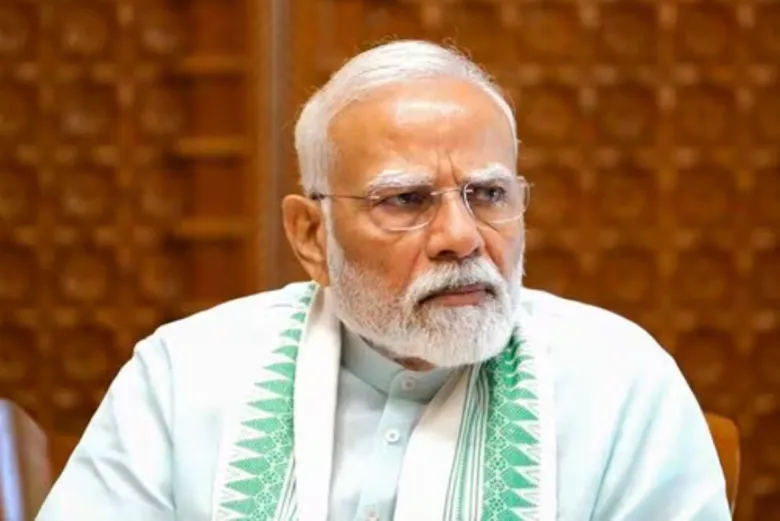– Advertisement –
By Qazi Nashat Akram
ISLAMABAD, Jul 3 (APP)::“Nuclear Weapon states don’t go to war”…..an established dictum in Strategic Studies. Perhaps, the Modi-led Government of India intends to establish a New Normal in South Asia. Instead of toiling for cooperation, it gives precedence to confrontation.
The Modi-led Government is purportedly obsessed with hurling antagonistic remarks against Pakistan and undermining the potency of its military. In pursuit of hegemonic designs, hawkish elements of the Indian politico-security establishment are ploying to carve out space for limited war under the nuclear threshold. The ultranationalist Indian prime minister even went on to declare Pakistan a sanctuary for terrorist groups without providing any actionable evidence. In his post-ceasefire statement, he said military operations have been paused, and will resume in the wake of any terror attack. Such aggressive stance from the top echelon of the Indian Government proves horrendous for regional stability and sustainable peace.
The doctrinal evolution of their military strategy to integrate offensive-defense threatens fragile peace in South Asia. Pakistan has always maintained its commitment and will to establish peace while showcasing the resolve and capability of its Armed Forces to respond to Indian aggression.
The aerial strikes conducted by India against Pakistan in the aftermath of Pulwama and Pahalgam episodes stand as a testament to the recklessness, impulsiveness, and irresponsible attitude of its civil-military leadership. In both cases, India attempted to materialize its so-called punitive strikes against alleged militant camps inside Pakistani territory, as enshrined in its Basic IAF Doctrine (2012), Joint Armed Forces Doctrine (2017), and Land Warfare Doctrine (2018). In addition to kinetic operations, the Indian Government launched a disinformation campaign to justify its illegal actions and clinch domestic legitimacy.
Under the Article 51 of The UN charter, Pakistan’s response was in line with its Full Spectrum Deterrence. In Feb 2019, PAF targeted open spaces near sensitive military installations of India to demonstrate its will and capacity to inflict massive damage to the adversary. In May 2025, Pakistan’s response encompassed Airstrikes and precision missile strikes against military targets. Pakistan denied India the feasibility of limited War in South Asia via its Quid Pro Quo Plus (QPQ+) response.
South Asia is a least-integrated, conflict-prone, and impoverished region. All these factors exacerbate belligerence between rival states. Interestingly, it is becoming the center of focus for global powers owing to its strategic significance. The USA is bolstering India’s defense capabilities by engaging it in alliances like QUAD and establishing intelligence-sharing platforms like COMCASA and BECA. The convergence of global power competition and historical hostility between India and Pakistan proves cataclysmic for regional stability and peace.
Moreover, scholars of International Relations cannot rule out the possibility of limited war between asymmetric militaries, as evident in recent military engagements. The development of Full Spectrum Deterrence by Pakistan, with the introduction of Tactical Nuclear Weapons (TNWs), tremendously increases the cost of military adventurism for India. India terms the threat of TNW deployment in response to Blitzkrieg-style warfare formations—Integrated Battle Groups (IBGs)—as a nuclear bluff. The befitting response, with an additional premium package from Pakistan, vehemently denies such irrational strategic calculus of Indian politico-military leadership.
Expressing his opinion in a recent roundtable at the Institute of Regional Studies, titled Pakistan-India Confrontation 2025: Decoding the New Normal, Air Commodore (R) Dr. Zia Ul Haque Shamsi underscored immaculate professionalism and impeccable performance of PAF during the high-intensity aerial battle in the wake of Ops Bunyan Um Marsoos, which culminated in the downing of six highly advanced IAF platforms. He rightly proposed that the strategy of D2—Deterrence and Diplomacy—must be seamlessly augmented into Pakistan’s integrated response to effectively counter the flawed narrative and reckless aggression of the adversary.
In a nutshell, the risk of nuclear conflict persists in South Asia owing to the extremist, Hindutva-driven leadership of India. With its effective, precise, and proportionate response, Pakistan has increased the cost of so-called punitive strikes. Furthermore, Pakistan’s robust, synchronized conventional retaliation, coupled with a credible strategic force, puts cold water on Modi’s hot pursuit of establishing a New Normal in South Asia.
